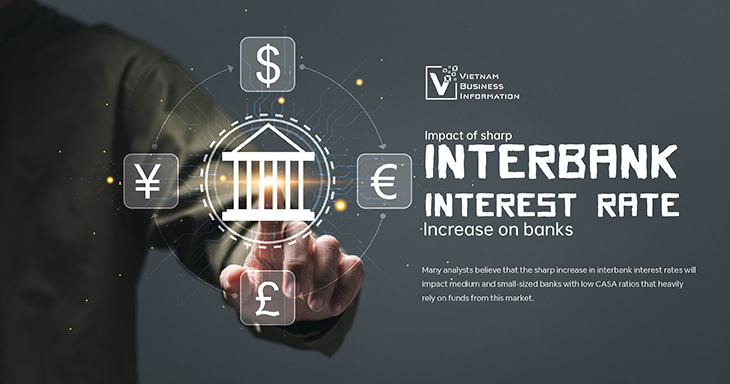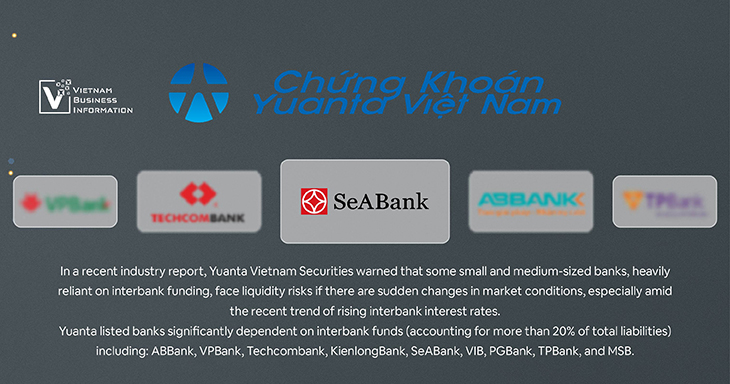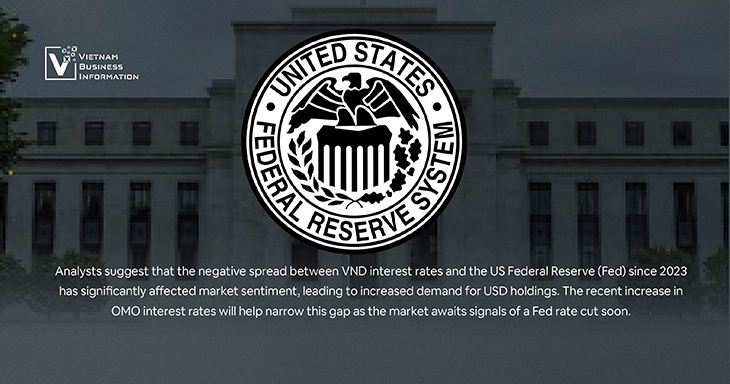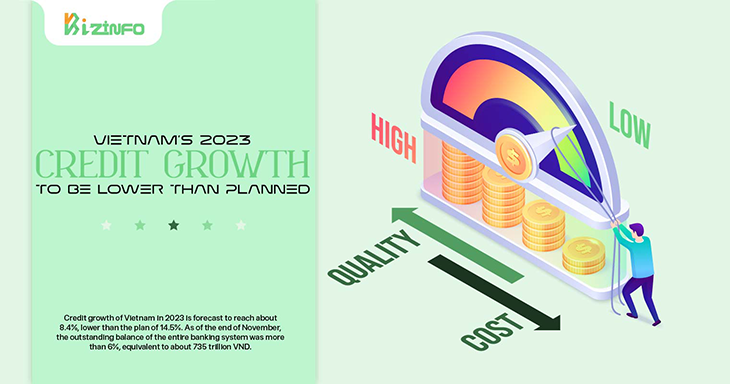Published Jun 2024
Impact of sharp interbank interest rate increase on banks
Many analysts believe that the sharp increase in interbank interest rates will impact medium and small-sized banks with low CASA ratios that heavily rely on funds from this market.

Impact on banks as interbank interest rates surge
The recent surge in interbank interest rates has been analyzed by some experts, who suggest it will affect the operations of several banks within the system. Specifically, in April and May, the overnight VND interest rate in the interbank market increased by nearly 4 percentage points to the highest level in a year. At one point, the overnight VND interest rate reached 5.1%, compared to less than 1% in January.
The recent rise in interbank interest rates reflects tighter liquidity in the system after the State Bank of Vietnam (SBV) proactively withdrew money supply to limit fluctuations in the foreign exchange market.
In a low-interest-rate environment, interbank borrowing helps reduce costs. However, this also increases the liquidity risk for banks compared to others.
In a recent industry report, Yuanta Vietnam Securities warned that some small and medium-sized banks, heavily reliant on interbank funding, face liquidity risks if there are sudden changes in market conditions, especially amid the recent trend of rising interbank interest rates.

Yuanta listed banks significantly dependent on interbank funds (accounting for more than 20% of total liabilities) including: ABBank, VPBank, Techcombank, KienlongBank, SeABank, VIB, PGBank, TPBank, and MSB.
However, from another perspective, VIS Ratings suggests that medium and small-sized banks rely more on interbank funds for lending and liquidity management, but the impact of rising interbank interest rates on these banks remains manageable. According to VIS Ratings, small banks still benefit from low deposit interest rates after the SBV cut policy rates four times in 2023. "We believe small banks still have sufficient profit margins to absorb increased costs from interbank borrowing and higher deposit rates."
Since early May, six-month deposit rates have increased by 0.5 - 0.8 percentage points per year at medium and small banks and by 0.1 - 0.3 percentage points at large banks due to competition for deposits as credit growth accelerates. Banks may also pass on part of the higher deposit costs to borrowers.
"Banks had to endure very high funding costs in late 2022 and early 2023 but still managed to get through. We believe interbank interest rates will gradually cool down for the rest of 2024 as exchange rate pressures stabilize," VIS Ratings predicts.
SBV regulation through interbank interest rates
VIS Ratings experts forecast that the SBV will regulate OMO (Open Market Operations) interest rates alongside overnight interbank interest rates to ensure that OMO funds can serve as a last-resort lender for commercial banks when necessary.
At the same time, the SBV is expected to continue prioritizing a balance between supporting economic growth and managing risks like inflation and exchange rates. Domestic inflation is currently influenced mainly by input factors and remains under control.
The SBV has also used various tools to curb exchange rate volatility. Therefore, VIS Ratings expects interest rates to remain low in 2024.
Analysts suggest that the negative spread between VND interest rates and the US Federal Reserve (Fed) since 2023 has significantly affected market sentiment, leading to increased demand for USD holdings. The recent increase in OMO interest rates will help narrow this gap as the market awaits signals of a Fed rate cut soon.

In April and May, the Vietnamese rating agency estimated that the SBV withdrew 90 trillion VND from the market by selling over 3.5 billion USD in foreign exchange reserves to banks. On May 22, the SBV raised the OMO interest rate by 0.25% to 4.5%, in line with the rising overnight VND interbank interest rates.
Following these SBV actions, the USD exchange rate in the banking system has gradually stabilized after increasing by 4.3% since the beginning of 2024.
Source: vietnambiz
Compiled by VBI


